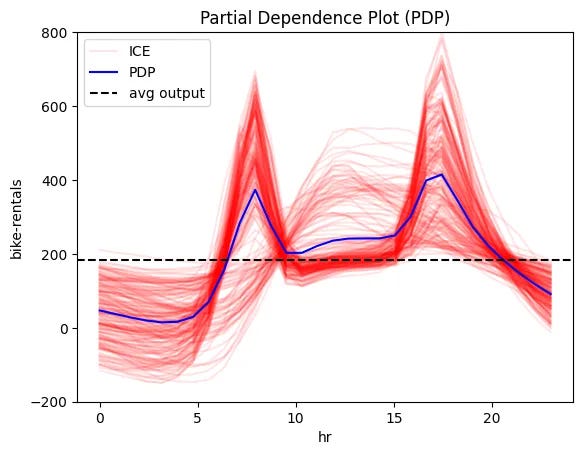
Metadata
- Author: Christoph Molnar
- Full Title: Additive Thinking: A Human Habit
- URL: https://mindfulmodeler.substack.com/p/additive-thinking-a-human-habit
Highlights
- Humans love to tell stories in pieces.
“I failed the exam—mainly because I didn’t study enough, and partly because I couldn’t concentrate.” “This house costs $200K because it’s new, big, and shiny.” (View Highlight)
- These explanations divide the outcome into parts, each carrying its own informal weight. The brain assigns responsibility like a judge handing down proportions of blame or credit. This process is intuitive and deeply rooted in how we understand the world: by breaking it down into additive chunks. (View Highlight)
- This preference for additive thinking naturally extends to how we interpret machine learning models. Additive explanations are simpler, and they feel closer to how we already think. Feature effect plots—which break down a model’s predictions into individual feature contributions—lean into this. They offer a clear visual story: (View Highlight)
- Consider a neural network trained to predict bike rentals using: weather (temperature, humidity, windspeed) and time (hour, weekday, month, etc.) information. (View Highlight)
- Once trained, we might generate global feature effect plots for individual features to understand how the model behaves. Below, we focus on features: hour and temperature.
 (View Highlight)
(View Highlight) - 📈 Bike rentals are low during the night. Two sharp rises exist: one around 8 AM (going to work) and 5 PM (return home) (View Highlight)
- 🌡️ Rentals increase with temperature until about 20°C, then taper off (View Highlight)
- These plots are simple and easy to interpret, and that’s their charm. Even non-experts can make sense of them. Even without technical training, one can see patterns like increased bike rentals during commuting hours and a preference for milder temperatures—observations that align well with common sense. (View Highlight)
- But here’s the catch: The simplicity of global interpretations often masks the complexity of the underlying model. (View Highlight)
- Real-world phenomena—and most ML models—are not additive. A neural network doesn’t treat features independently. It blends them. It computes outputs through interactions, not isolated contributions. If we rely only on global explanations, we risk telling tidy stories that miss the messy truth. (View Highlight)
- In explainability, our goal is to be as simple as possible—but no simpler. The simplest explanation is best, as long as it doesn’t conceal critical details. (View Highlight)
- The effect of temperature on bike rentals isn’t the same on a Monday morning as it is on a sunny Saturday afternoon. The assumption of additivity doesn’t just fall short—it obscures the truth. (View Highlight)
- One promising approach is to decompose global effects into smaller, regional patterns, where the interaction landscape is simpler and additivity becomes a more reasonable approximation. (View Highlight)
- This is the underlying logic of methods like GADGET (Generalized Additive Decomposition of Global EffecTs): Instead of explaining a feature’s effect on the prediction globally, GADGET splits the feature space into interpretable and distinct regions, such that within each region, the feature behaves (more) additively. Each subregion is chosen to minimize variation in how that feature contributes to predictions.
Think of it like this:
Rather than forcing a single story about temperature’s effect, we allow multiple stories to coexist—each locally coherent. (View Highlight)
- decomposition uncovers that
• On working days, the hour of day has a strong effect, peaking around commute times.
• On weekends, the pattern shifts: rentals peak late morning, possibly reflecting leisure trips.
• On cold days, even that leisure pattern may vanish—because nobody wants to bike in 2°C weather.
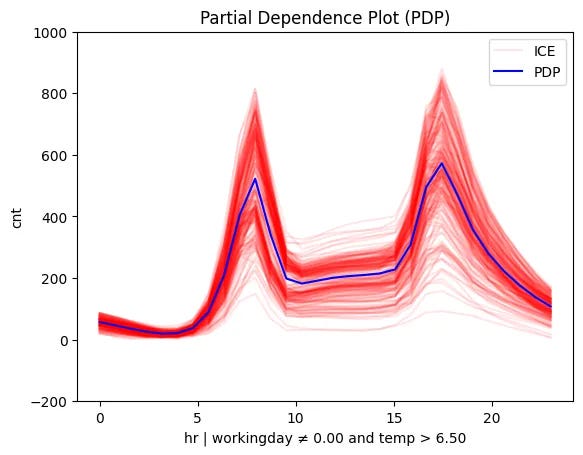 (View Highlight)
(View Highlight) 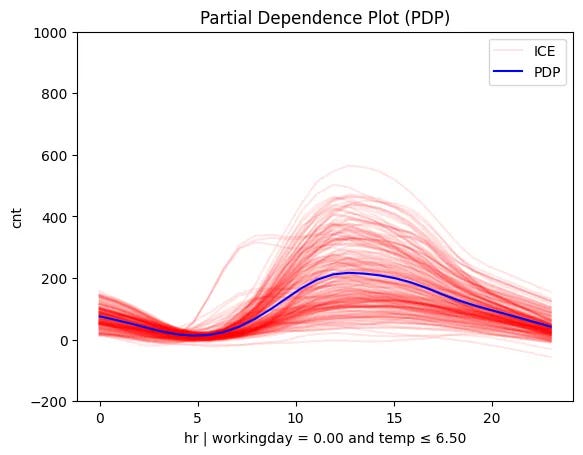 (View Highlight)
(View Highlight)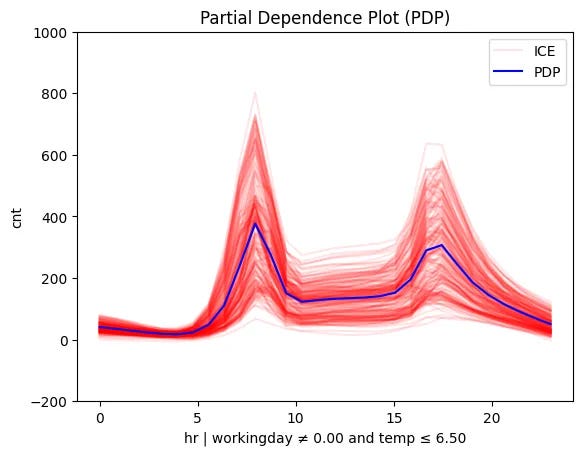 (View Highlight)
(View Highlight)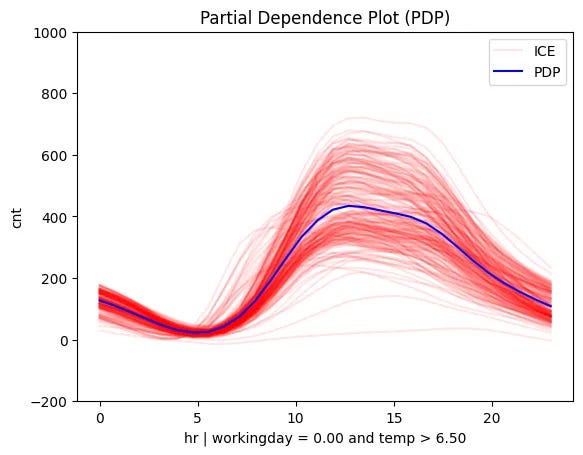 (View Highlight)
(View Highlight)- By automatically identifying these subregions, regional effect plots provide more faithful and more precise explanations—without adding complexity to the user. (View Highlight)
- Effector is a Python package designed to make creating regional effect plots effortless without any complicated setup. Key Features • ✔ Works with any model: Whether you’re using decision trees, random forests, or neural networks, Effector can handle them all. • ✔ Fully compatible: Built to work seamlessly with scikit-learn, PyTorch, and TensorFlow. • ✔ Simple to use: Effector simplifies what would otherwise be a complex task, making it easy to generate, interpret, and visualize regional effects. (View Highlight)